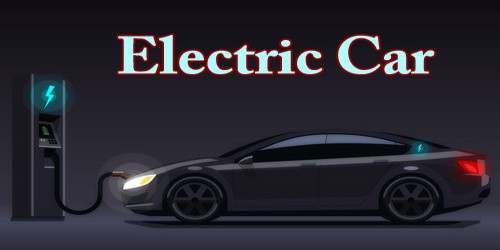The whole world is under the discussion of one single topic “Go Green”. With the exploited environment, overused resources, and unnecessarily wasted energy, the world is about to face a crisis. One of the innovations to avoid such a crisis and save the world from even more exploitation is “Electric Car”.
In the 19th and 20th, century electricity was one of the preferred ways to power an automobile. At that time an electric powered automobile was chosen over a fuel-powered automobile because electric powered automobiles were much easier to handle and much cheaper and easier in maintenance. But why did people still chose a fuel-powered automobile?
The competition between electric vehicles and fuel-powered vehicles was killing. During the 20th century, the electric car lost popularity. There are a number of reasons to explain the decrease of popularity. The invention of the automatic starter, the growing market of cheap fuel, mass production, and easier and faster fuelling. Soon, the fuel-powered cars using the latest Internal Combustion Engines had more advantages than the electric car. The electric car slowly disappeared.
Only after decades, the electric car was reintroduced when General Motors produced their first electric car. At first sight, the reintroduction of the electric car seemed a great success and in late 1990 it even created a real hype. People really believed the electric car could change the world.
From 2008, a renaissance in electric vehicle manufacturing occurred due to advances in batteries, and the desire to reduce greenhouse gas emissions and improve urban air quality. Several national and local governments have established government incentives for plug-in electric vehicles, tax credits, subsidies, and other incentives to promote the introduction and adoption in the mass market of new electric vehicles, often depending on battery size, their electric range, and purchase price. The current maximum tax credit allowed by the US Government is US$7,500 per car. Compared with internal combustion engine cars, electric cars are quieter and have no tailpipe emissions and lower emissions in general. In January 2019 and updated in April, a Reuters analysis of 29 global automakers concluded that automakers are planning on spending $300 billion over the next 5 to 10 years on electric cars, with 45% of that investment projected to occur in China.
An Electric Car is an electric vehicle, which in all ways works and makes you feel like the usual cars, is just a car that runs using batteries, solar panels or other energy sources. With the increasing oil prices, the significance of electric cars cannot be ignored.
We can find many advantages with an electric car:
- Zero Oil price and promotes Energy Management
- Aids in reducing the emission of Green House Gases
- No tailpipe pollutants emitted, leads to reduced air pollution
- No gas required to run your Electric Car
- Cost-Effective and many governments are appreciating Electric Cars by money-back offers
- Electric Cars guarantee a smooth drive and reduce noise pollution too
Charging an electric car can be done at a variety of charging stations, these charging stations can be installed in both houses and public areas. Tesla Model 3 was the world’s best selling EV from 2018 to 2019 and had a maximum electric range of 500 km (310 miles) according to the EPA. Model 3 became the world’s all-time best selling electric car by early 2020.
Electric Cars are modes of Green Transportation that run using Batteries, Solar Panels or other energy sources that are just one-time investment. The charging of batteries of saving energy through Solar Panels might be time-consuming, but such initiatives ensure a safe environment. Though electric cars are a little costly, we should participate in such a global initiative and encourage others to do the same. After all, it is we who can make our world a better place to live in.
















